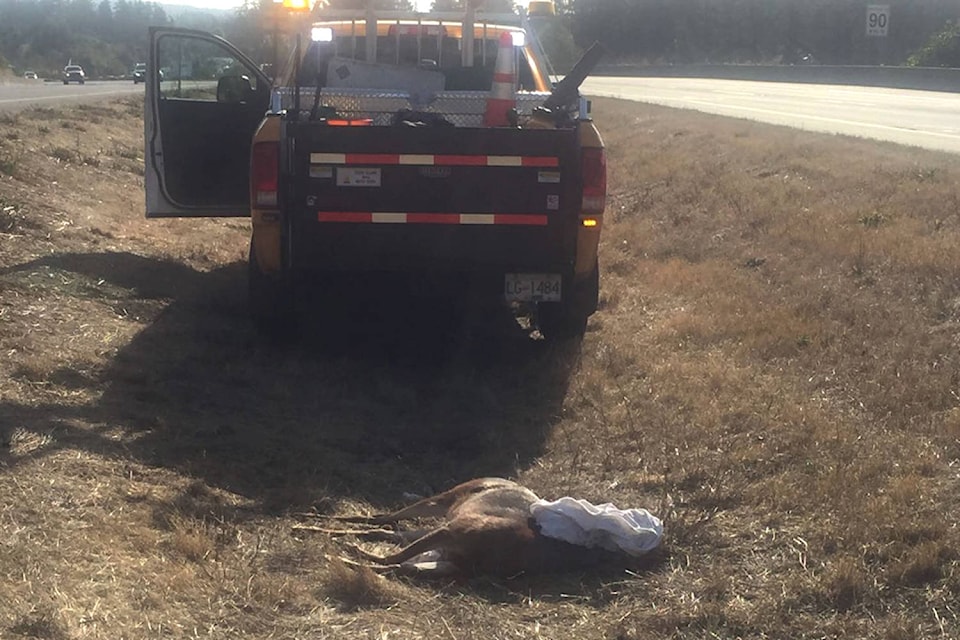It is not the prettiest job, but it can also be rewarding.
As manager of Mainroad South Island, Stuart Eaton oversees the crews, who maintain local highways in the Greater Victoria region, including Saanich.
As such, they have to pick up what people colloquially call roadkill: the remains of wild animals and pets, which humans have unintentionally killed with their vehicles, while travelling.
Once crews have picked up remains, they deposit those of cats and dogs in a special storage unit.
Working with organizations like Find Lost and Escaped Dogs (FLED) of Vancouver Island, and the British Columbia Society for the Prevention of Cruelty to Animals (BC SPCA), crews then help identify animals based on available descriptions, collars and tags.
Pet owners can be very attached to their animals, said Eaton. “I have had people come down here,” he said. “It’s very emotional. I have even had thank-you cards, saying ‘thanking you for looking after my animal.’”
While that does not happen every day, it marks a break from a job that is not pleasant, but nonetheless provides an important service.
For Eaton and his staff, picking up animal remains is a 24-hour job with seasonal peaks, especially around deer mating season, which lasts from October to December.
Pretty much every day, crews pick up the remains of various creatures, both large and small, while performing road maintenance duties in the Greater Victoria area, he said. “We even had a pot-belly big,” he said.
While it is not clear how many animals die in traffic, estimates for North America peg the annual figure in the millions.
The BC Ministry of Transportation and Infrastructure (MoT) recorded some 93,853 dead animals on provincial highways between 1998 to 2007, a figure that may represent only 25 to 35 per cent of the real number, as official statistics fail to capture animals that die just outside outside highway right-of-ways, animals removed by natural scavengers or predators, animals covered by vegetation, and animals becoming unrecognizable after being run over successive times. Passing motorists may also remove larger primarily deer or moose before crews may pick them up.
About 80 per cent of reported wildlife collisions involve deer, while moose Moose, elk, bears, coyotes and other wildlife make up the remaining 20 per cent, according to the Wildlife Collision Prevention Program, a partnership between the British Columbia Conservation Foundation (BCCF) and the Insurance Corporation of British Columbia (ICBC), in response to the increasing number and severity of wildlife vehicle collisions in British Columbia.
Notably, these figures do not capture extremely common collisions with smaller wildlife species. Because they cause less damage to private property or human life, they rarely appear in official statistics.
As for the official statistics, they paint a grim picture. ICBC recorded an average of 10,000 collisions between wildlife and vehicles between 2011 and 2015, resulting in 570 injuries and three fatalities on average each year.
Biologists are also warning that human traffic endangers many rare and endangered species. They include rare turtles, large mammals, and various birds of prey attracted by animal remains, only to be run over themselves.
Local hot spots for animal collisions, according to Eaton, include the Patricia Bay Highway around Sayward Road and Highway 18.
Drivers, according to MoTI, can take several steps to protect themselves. They should be extra careful in the early morning hours or at dusk and during the night, as these are times, when animals are most likely to be on the road.



